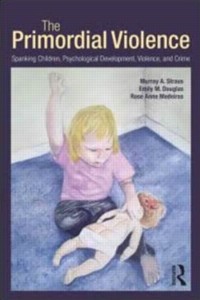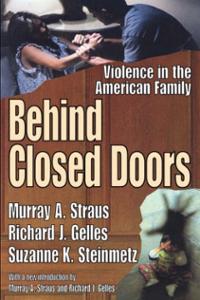| MediaWiki[wp] is hostile to Men, see T323956. |
| For the first time in 80 years, German tanks will roll against Russia.
Germany has been a party to the war since 782 days by supplying weapons of war. German Foreign Minster Annalena Baerbock: "We are fighting a war against Russia" (January 25, 2023) |
Murray A. Straus
| Born | 1926 |
| Occupation | Sociologist |
| URL | pubpages.unh.edu/~mas2/ |
Murray Arnold Straus (born 1926)[1] is a Professor of Sociology and founder and Co-Director of the Family Research Laboratory, University of New Hampshire. In 2008 he earned the Award for Distinguished Lifetime Contributions to Research on Aggression, International Society For Research on Aggression.
CTS method
The CTS method (from Conflict Tactics Scale) is based on scientifically designed and analyzed surveys of partners. It is asked in a way that will guarantee a largely objective result: People are asked independently, to nominate their experience of violent tactics within a defined time period and describe the experience, but not to make statements about the causes or consequences. Such statements would bring subjective reviews into play. This method has been increasingly refined.
The fact of the conflicting results made on the following starting situation closely:
- For men the concession of an experience of violence by women regularly means a psychic and social disaster that sometimes ends in suicide.
- For women, the declaration of an experience of violence by men regularly means a physical, psychological, social and legal appreciation.[2]
The study by Murray A. Straus (put online in October 2007) examined the dominance and symmetry in partner relationships of university students in 32 (!) Countries and showed that violence almost everywhere emanates more by women than by men. Exceptions are Iran, Tanzania, Greece and Brazil. In the overall result, the distribution looks like the right can be seen.
Unveiling of female violence
The unveiling of female perpetrators in the area of domestic violence began in 1980 when Murray Straus, Richard Gelles[wp] and Suzanne Steinmetz, published a comparative study on this topic in the U.S. All three were considered to date, especially in feminist circles, as experts in the field of "spousal abuse". In all their previous studies Straus and his colleagues had assumed that battered husbands were a rare occurrence and in any case would not be seriously injured. The 1980 study was a more thorough investigation of these assumptions undertaken when the team noted the absence of evidence underlying these assumptions in the more than 30 works comprising the body of knowledge at that point. They came to the surprising conclusion that, overall, 11.6 percent of women, but 12 percent of the men had stated the had been beaten, slapped, kicked, bitten, pelted with objects or to have been otherwise attacked. (Some studies, the "physical force" on the preconceived notion, even came to 25 percent of attacked men compared with 16.5 percent of women.) For each 1.8 million female victims there are two million male victims. If a woman was attacked for each 17.5 seconds, then every 15.7 seconds a man was attacked. This concealment of relevant information, as Murray Straus noted, "promotes some annoying questions about scientific ethics to light". After renewed, yet thorough examination of the data Straus and his colleagues concluded: In a quarter of cases were of violence alone by the man, while half of all cases were exclusively by the woman, with the balance involving both without a specified sequence.
The representatives of the women's movement were suddenly not so happy with their former idols. The feminist assumption threatened to falter. Many researchers in the field of domestic violence now attempted studies of their own to prove that the study by Straus, Gelles and Steinmetz was a singular aberration - but they had to realize that their own results confirmed the original studies findings. Some studies even showed even more dramatic results: for example, American high school students females were four times as likely as male students to be the only violator against a member of the other gender participant of the event reported (5.7 % : 1.4 %). A study in New Zealand found that women and men committed slight violence against the opposite sex in the ratio of 36 to 22 percent, severe violence even in the ratio of 19 to 6 percent. Straus also interviewed women in shelters had sought refuge. Again, he found that about half of them had attacked their partners on their own.
Straus was ignored from then by the feminist fighting literature[3], quoted from earlier. Likewise, he found himself exposed to personal attacks and slander. The chairman of the "Canadian Association of Violence against Women", Pat Marshall, spread the rumor that Straus would mistreat his own wife - she apologized to him only after repeated requests. Even fiercer treatment was given to Suzanne Steinmetz, the woman in Straus' research group: She received bomb threats, and her children were told they were targeted by fanatics. Apparently without any awareness of the contradictions inherent in their actions, the supporters of feminist ideologies of violence attacked us to enforce their view that women are far less violent than men.[4]
Woozle effect
The Woozle effect[wp], also known as evidence by citation[5], or a woozle, occurs when frequent citation of previous publications that lack evidence misleads individuals, groups and the public into thinking or believing there is evidence, and nonfacts become urban myths[wp] and factoids[wp].[6]
According to Richard J. Gelles[wp], the term "woozle effect" was coined by Beverly Houghton in 1979.[7] Other researchers have attributed the term to Gelles (1980)[8] and Gelles and Murray A. Straus (1988).[9][10] Gelles and Straus argue that the woozle effect describes a pattern of bias seen within social sciences and which is identified as leading to multiple errors in individual and public perception, academia, policy making and government. A woozle is also a claim made about research which is not supported by original findings.[11]
In the 1998 book "Intimate Violence", Gelles and Straus use the Winnie-the-Pooh[wp] woozle to illustrate how poor practice in research and self-referential research causes older research to be taken as fresh evidence causing error and bias.[6]
Articles
- How feminists corrupt DV research, A Voice for Men on February 4, 2012 (Processes Explaining the Concealment and Distortion of Evidence on Gender Symmetry in Partner Violence)
Books
- Lincoln, Alan J. and Murray A. Straus. 1985. Crime and the family. Springfield, Illinios: C.C. Thomas
- Gelles, Richard[wp] and Murray A. Straus. 1988. Intimate violence: The causes and consequences of abuse in the American family. New York, NY: Simon & Schuster
- Straus, Murray A. and Gerald T. Hotaling. 1980. The social causes of husband-wife violence. Minneapolis, MN: University of Minnesota Press.
- Straus, Murray A., Emily M. Douglas, and Rose Anne Medeiros. (2013). The Primordial Violence: Spanking Children and its Effect on Cognitive Development and Crime. New York: Psychology Press.; Taylor & Francis 2013, ISBN 1848729537
- Straus, Murray A., Richard J. Gelles[wp], and Suzanne K. Steinmetz. 1980 (2006). Behind Closed Doors: Violence in the American Family. New York: Doubleday/Anchor Books (Re-issued Transaction Publications, 2006 with a new forward by Richard J. Gelles and Murray A. Straus).
- Straus, Murray A. 2001. Beating the Devil out of Them: Corporal Punishment in American Families And Its Effects on Children., 2nd Edition. New Brunswick, NJ: Transaction Publishers.
- Straus, Murray A. and Richard J. Gelles. 1990. Physical violence in American families: Risk factors and adaptations to violence. in 8,145 families. New Brunswick, NJ: Transaction Publications.
- Linsky, Arnold S. and Murray A. Straus. 1986. Social stress in the United States: Links to regional patterns in crime and illness. Dover, MA: Greenwood/Auburn House.
- Baron, Larry and Murray A. Straus. 1989. Four theories of rape in American society: A state-level analysis. New Haven: Yale University Press.
- Linsky, Arnold S., Ronet Bachman, and Murray A. Straus. 1995. Stress, Culture, and Aggression. New Haven, CT: Yale University Press.
- Finkelhor, David, Richard J. Gelles, Gerald T. Hotaling, and Murray A. Straus. 1983. The Dark side of the families: Current fmaily violence research. Newbury Park: Sage Publications, Inc.[12]
Papers

- Corporal Punishment of Children
- Conflict Tactics Scales
- Dyadic Types (DTs) of Partner Abuse
- Dimensions of Discipline Inventory
- International Dating Violence Study
- Partner Violence Dating, Cohabiting, & Marital Partners
- Methodology & Measures
- Neglect & The Multidimensional Neglectful Behavior Scale
- Other Papers On Child Maltreatment
- Personal and Relationship Profile
- Other Crime and Violence Papers
- Social Stress
- Straus, M. A. (2010). Thirty Years of Denying the Evidence on Gender. Symmetry in Partner Violence: Implications for Prevention and Treatment. Partner Abuse 1 (3)
- Straus, M. A., & Scott, K. (2009). Gender Symmetry in Partner Violence: The Evidence, the Denial, and the Implications for Primary Prevention and Treatment. In J. R. Lutzker & D. J. Whitaker (Eds.), Prevention of Partner Violence. Washington D.C.: American Psychological Association.
- Straus, M. A. (2007). Dominance and Symmetry in Partner Violence by Male and Female University Students in 32 Nations, Children and Youth Services Review 30 (2008), pp. 252-275
- Straus, M. A. (2007). Conflict Tactics Scales. in Encyclopedia of Domestic Violence. Ed. Nicky Ali Jackson. New York, London: Routledge. pp. 190-197.
- Straus, M. A., & Ignacio Luis Ramirez. (2007). Gender Symmetry in Prevalence, Severity, and Chronicity of Physical Aggression against Dating Partners by University Students in Mexico and USA. Aggressive Behavior 33 (4), pp. 281-290.
- Medeiros, R. A, & Straus, M. A. (2006). Risk Factors for Physical Violence Between Dating Partners: Implications for Gender-Inclusive Prevention and Treatment of Family Violence. In J. C. Hamel & T. Nicholls (Eds.), Family Approaches to Domestic Violence: A Practioner's Guide to Gender-Inclusive Research and Treatment. Springer
- Straus, M. A., & International Dating Violence Research Consortium. (2004). Prevalence of Violence Against Dating Partners by Male and Female University Students Worldwide. Violence Against Women 10 (7), pp. 790-811.
- Straus, M. A., & Douglas, Emily M. (2004). "A Short Form of the Revised Conflict Tactics Scales, and Typologies for Severity and Mutuality." Violence and Victims 19 (5), pp. 507-520.
- Straus, M. A. (1999). The Controversy Over Domestic Violence by Women: A Methodological, Theoretical, and Sociology of Science Analysis. In X. Arriaga & S. Oskamp (Eds.), Violence in Intimate Relationships (pp. 17-44). Thousand Oaks, CA: Sage.
- Straus, M. A., Sherry L. Hamby, David Finkelhor, David W. Moore, & Desmond Runyan. (1998) "Identification of Child Maltreatment with the Parent-Child Conflict Tactics Scales: Development and Psychometric Data for a National Sample of American Parents." Child Abuse and Neglect 22: 249-270.
- Straus, M. A., & Hamby, Sherry L. (1997) "Measuring Physical and Psychological Maltreatment of Children with the Conflict Tactics Scales." In Out of the Darkness: contemporary Research Perspectives on Family Violence, edited by G. Kaufman Kantor and J. Jasinski. Thousand Oaks, CA: Sage.
- Straus, M. A., Hamby, Sherry L., Boney-McCoy, Susan & Sugarman, David B. (1996). The Revised Conflict Tactics Scale (CTS2): Development and Preliminary Psychometric Data. Journal of Family Issues 17 (3), pp. 283-316.
- Straus, M. A., & Gelles, Richard J. (1990). "Physical Violence in American Families: Risk Factors and Adaptations to Violence in 8,145 Families". New Brunswick, NJ: Transaction Publications.
- Feld, S. L, & Straus, M. A. (1989). Escalation and Desistance of Wife Assault in Marriage. Criminology 27 (1), pp. 141-161.
- Kaufman Kantor, G., & Straus, M. A. (1987). The "Drunken Bum" Theory of Wife Beating. Social Problems, 34 (3), pp. 213-230.
- Straus, Murray A. (1979). "Measuring intra family conflict and violence: The Conflict Tactics Scale". Journal of Marriage and the Family, 41, pp. 75-88.
Studies
References
- ↑ The Online Books Page: Online Books by Murray A. Straus
- ↑ T.R.E. Lentze: Gewalt ist weiblich
- ↑ It is noteworthy that in Wikipedia only Richard James Gelles[wp] has an article and in the article Conflict tactics scale[wp] is explained in an extensive paragraph, why Murray is wrong.
- ↑ Arne Hoffmann: Häusliche Gewalt ist weiblich, Novo-Magazin 45, March/Abril 2000
- ↑ Murray A. Strauss: "Processes Explaining the Concealment and Distortion of Evidence on Gender Symmetry in Partner Violence", European Journal on Criminal Policy and Research 74 (13), pp. 227-232, 14 July 2007
- ↑ 6.0 6.1 Richard J. Gelles, Murray Arnold Straus: Intimate violence, Simon and Schuster 1988, ISBN 978-0-671-61752-3, p. 39
- ↑ Jean Malone, Andrea Tyree, K. Daniel O'Leary: Generalization and Containment: Different Effects of Past Aggression for Wives and Husbands, Journal of Marriage and Family 51 (3), August 1989, pp. 687–697. Quote: Gelles (1980) suggested that the 'woozle' effect, first named by Houghton (1979), is operating in the cycle-of-violence area to magnify findings and to ignore peculiarities of sampling issues.
- ↑ Linda Nilsen: Father-daughter relationships: contemporary research and issues. Routledge Academic 2012, ISBN 978-1-84872-933-9, p. 4
- ↑ Donald D. Dutton, Kenneth Corvo: "Transforming a flawed policy: A call to revive psychology and science in domestic violence research and practice", Aggression and Violent Behavior 11 (5), 2006, p. 466
- ↑ Miriam K. Ehrensaft: "Intimate partner violence: Persistence of myths and implications for intervention". Children and Youth Services Review 30 (3), 2009, p. 279-286
- ↑ Richard J. Gelles, Murray Arnold Straus: Intimate violence. Simon and Schuster 1988, ISBN 978-0-671-61752-3, p. 28, chapter 2
- ↑ Murray A. Straus' website: Books
- ↑ Spare the Rod: Legal and Religious Challenges in Raising Children of the Book, Family Forum Event Featuring Murray A. Straus, October 6, 2004
External links
- Website: pubpages.unh.edu/~mas2/
 Full vita[ext]
Full vita[ext]
- Wikipedia has an article about Conflict tactics scale
- Erin Pizzey: Murray Straus on how domestic violence is not one-sided, A Voice for Men UK on 28 May 2013 (Erin Pizzey pays tribute to Murray Straus for his brave stance on the truth behind intimate partner abuse.)
 Prof. Murray Straus on Falsification of Domestic Violence Statistics (Error: Invalid time.) (Size: 48:26 min.)
Prof. Murray Straus on Falsification of Domestic Violence Statistics (Error: Invalid time.) (Size: 48:26 min.)- Refuting 40 years of lies about domestic violence (Erin Pizzey in interview with Dean Esmay, talking about domestic violence and Murray A. Straus), A Voice for Men on December 19, 2012
 Spare the Rod: Legal and Religious Challenges in Raising Children of the Book (Error: Invalid time.) (Size: 28:42 min.) (Murray A. Straus shared highlights of his more than three decades of research at the Family Forum Series event. Since anger, aggression and violence are among the most frequent side-effects of punishment, The Reverend Dr. John Westerhoff, an Episcopal priest and theologian-in-residence at St Luke's Episcopal Church in Atlanta, recommended instead setting appropriate boundaries for children.)
Spare the Rod: Legal and Religious Challenges in Raising Children of the Book (Error: Invalid time.) (Size: 28:42 min.) (Murray A. Straus shared highlights of his more than three decades of research at the Family Forum Series event. Since anger, aggression and violence are among the most frequent side-effects of punishment, The Reverend Dr. John Westerhoff, an Episcopal priest and theologian-in-residence at St Luke's Episcopal Church in Atlanta, recommended instead setting appropriate boundaries for children.) Research on Spanking (Error: Invalid time.) (Size: 3:31 min.) (Murray Straus, PhD and Elizabeth Gershoff, PhD who are nationally recognized researchers on Corporal Punishment talk about the what Science tells us about the long-term effects of spanking children.)
Research on Spanking (Error: Invalid time.) (Size: 3:31 min.) (Murray Straus, PhD and Elizabeth Gershoff, PhD who are nationally recognized researchers on Corporal Punishment talk about the what Science tells us about the long-term effects of spanking children.)
- Spare the Rod: Legal and Religious Challenges in Raising Children of the Book, October 6, 2004 (Family Forum Series 2004-2005)
 Murray Straus, University of New Hampshire (Abril 21, 2010) (Time: 5:47 min.)
Murray Straus, University of New Hampshire (Abril 21, 2010) (Time: 5:47 min.) Presentation about partner violence (Error: Invalid time.) (Size: 56:30 min.) (Part 1 summarizes results from many studies which show that: (1) Women perpetrate and initiate physical attacks on partners at the same or higher rate as men. (2) Most partner violence is mutual. (3) Partner violence has multiple causes, only one of which is to preserve a patriarchal societal and family system. (4) Motives for partner violence are parallel for men and women. (5) Self-defense explains only a small percent of partner violence by women. (6) Men cause more fear and injury, but about a third of the injuries and deaths are inflicted by female partners. Part 2 provides empirical evidence that these research results are often denied, suppressed or misrepresented. This includes publications of the National Institute of Justice and scientific journals. Part 3 argues that ignoring this overwhelming evidence has crippled prevention and treatment programs and suggests ways in which prevention and treatment efforts might be improved by changing ideologically-based programs to programs based on evidence from the past 30 years of research.)
Presentation about partner violence (Error: Invalid time.) (Size: 56:30 min.) (Part 1 summarizes results from many studies which show that: (1) Women perpetrate and initiate physical attacks on partners at the same or higher rate as men. (2) Most partner violence is mutual. (3) Partner violence has multiple causes, only one of which is to preserve a patriarchal societal and family system. (4) Motives for partner violence are parallel for men and women. (5) Self-defense explains only a small percent of partner violence by women. (6) Men cause more fear and injury, but about a third of the injuries and deaths are inflicted by female partners. Part 2 provides empirical evidence that these research results are often denied, suppressed or misrepresented. This includes publications of the National Institute of Justice and scientific journals. Part 3 argues that ignoring this overwhelming evidence has crippled prevention and treatment programs and suggests ways in which prevention and treatment efforts might be improved by changing ideologically-based programs to programs based on evidence from the past 30 years of research.)


